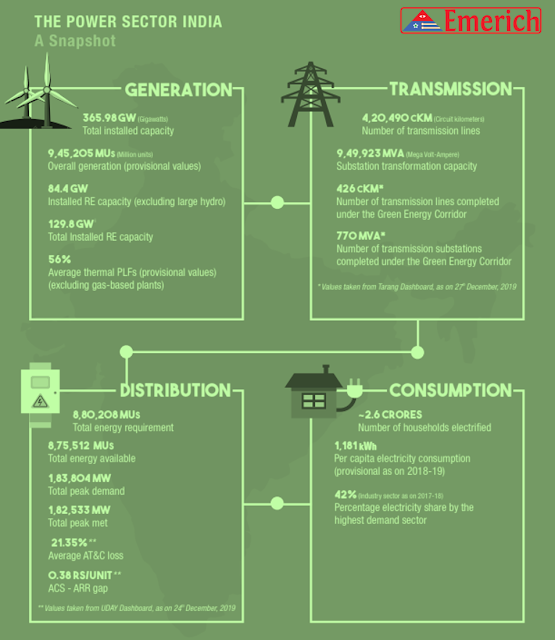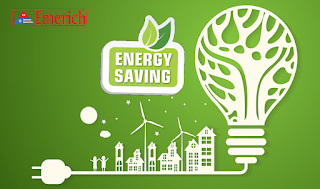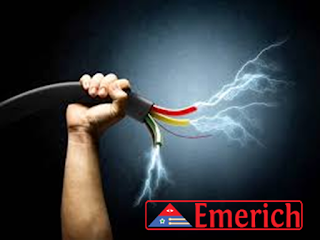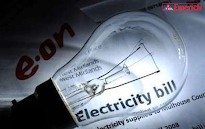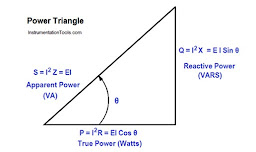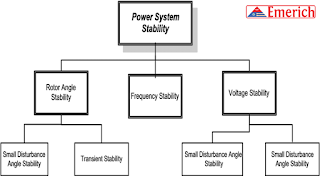Tuesday 11 August 2020
Round-trip Efficiency of Lithium Ion Battery
Friday 7 August 2020
Thursday 6 August 2020
MAJOR POWER QUALITY ISSUES DUE TO SOLAR PV DISTRIBUTED GENERATION (DG)
Wednesday 5 August 2020
Depth of Discharge (DOD) and Usable Energy in Lithium Ion Battery
Tuesday 4 August 2020
Li-ION vs. lead-acid batteries - which is best for your operation?
Thursday 30 July 2020
IMPACT OF POWER QUALITY PROBLEMS
Tuesday 28 July 2020
Tuesday 21 July 2020
Basic Energy saving tips for manufacturers
 |
| Add caption |
Saturday 18 July 2020
Considerations to choose power cable!
Wednesday 15 July 2020
Checklist to Identify When Power Quality Analysis Required
- capacitors are being added for the first time
- capacitors are currently installed and additional capacitors are being added
- capacitors are currently installed and problems are being encountered.
- If capacitors being added to a system where 20% of the connected load is harmonic sources?
- If there been unexplained operations of fuses or other protective devices
- If the measured RMS capacitor currents 135% (or greater) of rated current
- If there been any failures of capacitors currently installed at the facility
- If there been any instances of swelling or unusual noises on capacitors currently installed at the facility
- If there been unexplained failures or misoperations of sensitive equipment?
- If there been an unusual number of motor and failures or unexplained motor failures?
- Has the utility imposed harmonic limits?
- Is a plant expansion currently being planned that might include additional harmonic sources?
- Is there on-site generation that will provide power to a significant number of harmonic sources?
Tuesday 14 July 2020
Basics about kWh Vs kVAh Billing System & Comparison
Ideally the power factor is required to be unity. However, the power factor is leading if the load is predominantly capacitive and lagging if the load is predominantly inductive. PF incentives are given on electricity bill if the Power Factor is between 0.95 to 1. On other hand, penalties are levied if the Power Factor is below 0.9. It is therefore required that consumer should maintain higher power factor above 0.95 through proper compensation.
Two Part Tariff:-
Generally, the two-part tariff is followed by distribution utilities for the billing of electrical energy. The two parts are – fixed charges based on installed capacity and variable charge which is based on energy utilized actually.
Further, the two additional components namely Electrically Duty which is usually some % of billed energy and Fuel Cost Adjustment (FCA) charges are included in the bill. Thus, the total billed amount is calculated as follows- 16% – Example value
What is kWh billing system:-
At present, in Maharashtra and some states, the consumers are billed on Active Energy Consumption measured in kWh along with other components such as ED and FCA described above.
In kWh billing system, the incentives/ penalties are levied on Power Factor.
What is kVAh Billing System:-
In kVAh based billing system, the fixed charges or demand charges are levied on apparent power (kVA) and energy charges are levied on apparent energy (kVAh).
Because of kVAh billing system, Real and Reactive energies need not be charged separately.
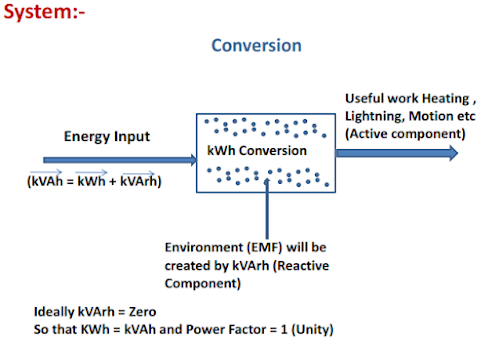 |
Utilization of energies |
Necessity of kVAh billing:-
Both Active (kWh) and Reactive (kVArh) energies are consumed simultaneously. Reactive Energy (kVArh) occupies the capacity of electricity network and reduces the useful capacity of system for generation and distribution & hence its consumption also needs to be billed. kWh based billing is associated with PF incentive /penalty mechanism. Considering that the kVAh based billing has an inbuilt incentive /penalty mechanism and separate mechanism for the same is no more required; instead of billing two energies separately, billing of kVAh energy is preferred as a commercial inducement.
The consumer is encouraged to draw/inject minimum reactive power.
Implementation of kVAh billing system:-
State Electricity Regulatory Commissions in various States viz. Himachal Pradesh, Delhi, Uttar Pradesh, Jammu & Kashmir, Andhra Pradesh, Chhattisgarh, Bihar, Haryana, Punjab etc. have already introduced kVAh based tariff for various categories.
In the state of Maharashtra, as per MERC Order in Case no. 195 of 2017 dated September 12, 2018, The Commission intends to implement kVAh billing to all HT consumer and LT consumers having load above 20 kW from 1st April 2020.
Advantages of kVAh billing system:-
Advantages to consumer:-
- kVAh billing will ensure that the consumers who will utilize the power efficiently will be paying less energy charges as compared to others who are not using the power efficiently.
- The new billing methodology will be much simpler to understand as number of parameters viz. PF, rkVAh (lead/lag), kWh units) will be reduced.
Advantages to utility:-
- Good system stability, improved power quality, improved voltage profile and reduced capital expenditure.
- Complete recovery of cost of active and reactive powers.
- Zero/ minimal drawl of reactive power by consumers.
- Reduction in power purchase cost
Thus, considering the larger benefit of consumers as well as the utility, it is important that the existing billing regime can be migrated to kVAh based billing.
Comparison between kWh and kVAh billing systems:-
Tuesday 7 July 2020
BASIC ELECTRICAL SAFETY AND RELIABILITY AT HOSPITALS
- Electromagnetic Compatibility: The high density of electric and electronic equipment in medical premises involves a risk on electromagnetic disturbances between the electricity supply and medical devices.
- Criticality of continuity: Many medical treatments cannot be interrupted even for a moment without entailing risk for patient and on occasion, life-threatening risk.
- Data integrity: Accurate medical data is essential and are often gathered by long-term or invasive patient examination.
- Leakage currents: Currents leaking from various devices may be individually safe but combined with others can add up quickly and exceed the safe level.
- Weak or sensitive patients: Some patients have weakened or non-existing reflexes in the event of direct contact with live electrical parts. Other patients may have reduced skin resistance because of stress, sweating, or catheters/electrodes introduced on or into the body.
- Protection against direct contact through proper insulation
- No power interruption is allowed (for medical equipment nor for support services such as lighting)
- An IT earthing system to protect against earth faults (avoiding power interruptions)
- Protection against direct contact through proper insulation
- In case of a power interruption, crucial support services such as lighting should switch to an alternative power supply
- A TNS earthing system is permitted
Friday 3 July 2020
Minimal set characteristics of a Battery based Storage System


Wednesday 1 July 2020
Types of Power System Stability and Stability Studies benefits
The stability of the system mainly depends on the behaviour of the synchronous machines after a disturbance. The stability of the power system is mainly divided into two types depending upon the magnitude of disturbances
Steady state stability
Transient stability
Steady-state stability – It refers to the ability of the system to regain its synchronism (speed & frequency of all the network are same) after slow and small disturbance which occurs due to gradual power changes. Steady-state stability is subdivided into two types
Dynamic stability – It denotes the stability of a system to reach its stable condition after a very small disturbance (disturbance occurs only for 10 to 30 seconds). It is also known as small signal stability. It occurs mainly due to the fluctuation in load or generation level.
Static stability – It refers to the stability of the system that obtains without the aid (benefit) of automatic control devices such as governors and voltage regulators.
Transient Stability – It is defined as the ability of the power system to return to its normal conditions after a large disturbance. The large disturbance occurs in the system due to the sudden removal of the load, line switching operations; fault occurs in the system, sudden outage of a line, etc.
Transient stability is conducted when new transmitting and generating system are planned. The swing equation describes the behaviour of the synchronous machine during transient disturbances.
The transient and steady-state disturbances occur in the power system are shown in the graph below. These disturbances reduce the synchronism of the machine, and the system becomes unstable.
Stability studies are helpful for the determination of critical clearing time of circuit breakers, voltage levels and a transfer capability of the systems.
Monday 15 June 2020
2022-23 to be golden period for global EV industry
By 2025, 30-35 percent of sales are expected to be electric which includes mild hybrid, full hybrids, plug-in, and battery. In terms of battery electric vehicles, about 10-12 percent of global sales will be fully electric.
Its said that the mild hybrid systems especially 12Volt systems, 48Volt systems, and 12+12 volt systems could be very attractive options for markets like China and India, especially in the small-to-medium segment.
NEWS: Karnataka to open roads for electric two-wheeler taxis
In the budget, the state proposed implementing an electric bike taxi project to improve last mile connectivity of public transportation, without divulging details.
“To improve the last mile connectivity in public transport in Bengaluru, it is proposed to implement “Electric Bike Taxi” project,” it said in the budget for financial year 2020-21.
Introducing regulations to allow use of two-wheelers as taxis has been a longstanding demand of mobility platforms such as Rapido, Ola and Uber. However, the state has delayed the rules despite getting approval from the Centre.
While some players in the bike taxi space dubbed Karnataka’s proposal as revolutionary, they said they would wait for details before commenting on its viability.
Others said the proposal would be hard to pull off in the near term, given a lack of electric two-wheelers on the roads today.
Uber and Ola, which currently offer bike taxi services in some cities, declined to comment for the story. Rapido, the largest bike taxi service in the country, could not be reached for comment.
“The biggest reason bike taxis worked was that a person who had a scooter or motorbike could now make money ferrying people,” said Vivekananda Hallekere, co-founder and CEO of Bounce, a two-wheeler rentals startup. “The proposal by Karnataka would mean that people will need to start buying electric scooters and I don’t know how successful that would be.”
The current model of bike taxis where bike owners attach themselves to platforms will not work under Karnataka’s proposal, but it could lead to mobility firms building their own fleets of two-wheeler EVs, he said.
Source: Economic Times







